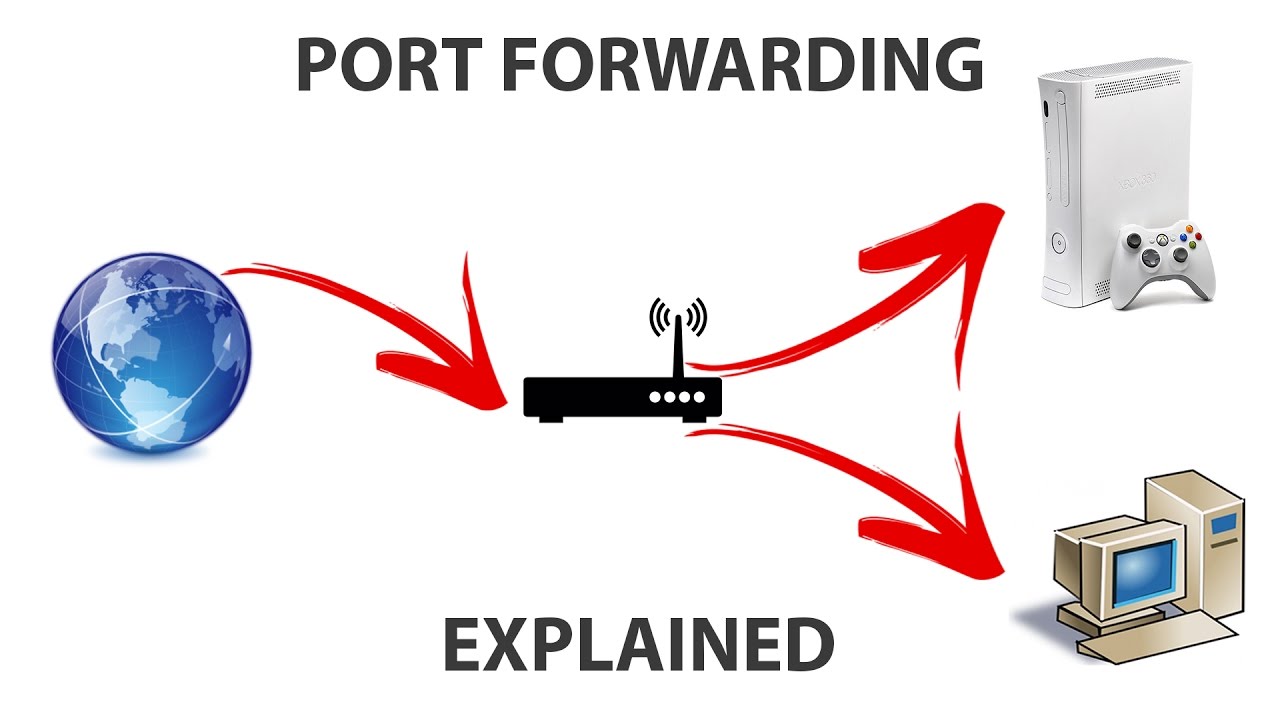No doubt, the internet has become an integral part of our lives. From home to office, we need internet everywhere. It not only helps us to stay connected to the world, but we also need it for work, entertainment, and other purposes.
However, just having an internet connection is not enough. In today’s fast-paced world, we need everything fast. Therefore, having a slow internet connection will hinder your workflow.
Now the question is what is a good internet speed? Almost every service provider in the market claims to offer the fastest internet speed. But what do they mean by that? What is fast or slow according to them? All this can lead to a lot of confusion, especially when you are planning to upgrade your plan.
Internet speeds are usually given in terms of download speeds. For example, if the download speed is 50 Mbps and the upload speed is 5 Mbps, it will simply be called a 50 Mbps internet speed. We may not pay much attention to the upload speed when choosing an internet plan, but it is important too.
Having a 50 Mbps internet plan is ideal for streaming videos, online gaming, and video calls on one or two devices. But the need for speed will vary from one person to another. While some people are content with 50 Mbps speeds, others may need more.
Things in the communication field change rapidly. The internet plan that you used last year might not be the best fit this year. So you need to keep a check on the technologies offered by the service providers.
To understand what is a fast/slow internet speed or how much internet speed Mbps you need, you should check out the guide below. You might find the information useful.
How Much Internet Speed Do You Need?
A good internet speed is at least 25 Mbps. But if your plan provides higher Mbps you will get a better browsing experience.
Most people are content with 25 Mbps, but if you are a heavy user you will need more speed to support your online activities. As mentioned above internet speeds are mentioned in terms of download speeds. So when we say that a good internet speed is 25 Mbps, we are referring to the download speed.
Just so you know the upload speed is always lower than the download speed. When choosing an internet plan you must pay attention to both the download and upload speed.
How do you figure out what sort of internet speeds you will need? It depends on your activities. To help you understand, we have broken down the details.
- Light use: You are a light user if you use the internet only for basic things like reading news, email, voice calls, basic video, and music streaming.
- Moderate use:ÂA moderate user will use the internet for all the things that a light user does and more. Like multi-party video conferencing, streaming HD videos, telecommuting, and or gaming.
- High use: You will do all the things included in the moderate and light use category and more. You should opt for a high-speed internet plan when multiple people in your house are using the internet for 4K streaming, online gaming, video conferencing, etc.
For light or moderate users, average speeds of 12 Mbps to 25 Mbps are fine. But this is only if your household consists of a single user on one device at a time. On the other hand, if you have multiple users or devices at a time, you will need higher internet speeds. The higher the download speed, the better experience you will get.
Understanding Download/Upload Speeds
Before choosing an internet plan, you need to first understand the difference between download and upload speeds because this is what will help you pick the right internet plan for yourself.
You thought you have the fastest internet speed, you go to upload a video online and your internet slows down. This happens because you have a slow upload speed. This is why we previously mentioned that upload speed is equally important as download speed.
Coming back to the main topic, download speed refers to the speed at which the internet connection can download or retrieve data from the internet. Online activities such as downloading large files, listening to music online, and streaming videos, all of these require you to download data. The internet downloads data in the form of videos, images, text, audio, and files.
On the other hand, upload speed refers to the speed at which data from your computer is sent to another device or server online. While downloading data is more common, some online activities require the data to travel in the opposite direction. For example, activities like playing live video games, sending emails, or video calling require fast upload speeds for the data to be sent to someone else’s server.
What is a Good Upload Speed?
Generally, a good upload speed is at least 5 Mbps. But most of us don’t care about the upload speed when picking an internet plan. This is where we do it wrong. Upload speed is equally important as the download speed. To choose the best internet plan you need to consider both upload and download speed.
Asymmetric DSL (ADSL) usually provides upload speeds of 1.5 Mbps; whereas a cable internet provider offers upload speeds from 5 Mbps to 50 Mbps.
For a smooth internet experience, 1.5 Mbps upload speed is enough. But it becomes more important when it comes to uploading HD-quality images, video calling, or live-streaming videos.
If you use your home network for live streaming, school or work regularly, ADSL’s upload speed can create problems. In this case, you will want upload speeds of up to 25 Mbps to 50 Mbps.
Instead of ADSL, you should opt for fiber-optic as they offer symmetrical upload speeds. For example, if the download speed is 100 Mbps, the upload speed is also 100 Mbps. It also offers a reliable internet connection, so you can have a better experience online.
What is a Good Download Speed?
A good download speed for most home networks is 12 Mbps to 25 Mbps. But this will vary depending on your activities and the number of devices connected to your home network. Like some people can do away with 12Mbps, while others will require more download speed.
For basic things like checking emails, surfing, listening to music, etc., a 12 Mbps download speed should be fine. But if you want to stream HD videos or play online games on multiple devices, you will need more download speeds. The more demanding the activities, the more download speed you need.
If you have a large family you should opt for 50 Mbps to 100 Mbps speed. This type of download speed can handle multiple devices at the same time, without interrupting the service.
The Different Internet Connection Types
There are different ways for an electronic device to connect to the internet, and each of them requires a different hardware type and connection speed. That being said, let’s walk you through the different types of internet connections.
#1. Dial-up
The dial-up connection is affordable but slow. It requires users to connect their telephone line to a computer to access the internet. Dial-up style connection is also known as analog.
This type of connection doesn’t allow users to receive or make phone calls through their home telephone service while it is connected to the internet. But this connection type has become outdated in modern times.
#2. Broadband
Broadband offers high-speed internet connection via either telephone or cable companies. It uses more than one data channel to transfer large volumes of data.
Broadband internet connections include cable and DSL connections which are high-bandwidth connections. Many DSL connections fall under the broadband category, but not all broadband connections are DSL.
#3. Cable
Cable internet connection is very popular these days. It is a type of broadband connection that makes use of a cable modem. It allows users to connect to the internet over cable TV lines.
The advantage of cable connection is that it is extremely fast. This is what makes it a preferable choice for many.
#4. DSL
DSL is short for Digital Subscriber Line. It uses a 2-wire copper telephone line connected to one’s home to deliver service at the same time as landline phone service.
Unlike dial-up connections, DSL allows users to make and receive phone calls even while browsing the internet.
#5. Mobile/Cellular
Almost all smartphone and cell phone providers offer voice plans along with internet data plans.
The Mobile internet connection is portable and provides decent speeds. It allows you to connect to the internet from any given location.
#6. Wi-Fi Hotspots
Wi-Fi hotspots are sites that provide internet connection over WLAN (wireless local area network) through a router that connects to an internet service provider.
Hotspots rely on Wi-Fi technology to allow electronic devices to connect to the internet or transfer data wirelessly through radio waves. The good thing about hotspots is that they can be both free-standing and phone-based. It can also be free or commercial to the public.
#7. Satellite
Satellite internet connection is used in areas where broadband cannot reach. Like a wireless connection, it uses a modem.
It accesses the internet using a satellite in the Earth’s orbit. Since it has to cover an enormous distance, the connection is often delayed. It provides an average speed of 512K to 2.0 Mbps.
#8. ISDN
Integrated Services Digital Network (ISDN) allows users to send voice, video, and data over standard telephone lines or digital telephone lines.
An ISDN adapter needs to be present at both ends of transmission – on the part of the internet service provider as well as the user.
What is Fast Internet?
Internet speeds of 100 Mbps or higher are considered fast internet. This kind of download speed can easily support multiple online activities for two or more users at once and that too without any buffering or interruptions.
If you want a fast internet connection in your home or office, fiber-optic and cable internet connection are the best bet. Compared to cable internet, fiber-optic is better as it offers greater speed consistency. Plus, it doesn’t slow down even during peak hours.
Luckily, there are many fiber or cable internet providers out there. Some of the top service providers are CenturyLink, AT&T, Cox, Windstream, Xfinity, Spectrum, Suddenlink, Verizon Fios, and Optimum. All of them offer speeds up to 1000Mbps in select areas. Some of them are soon going to offer 2000Mbps speeds in 2022.
Download speeds of 1000Mbps or more are called gigabit internet. Many residential require gigabit internet speed. It is ideal for those who frequently require a large amount of bandwidth. But gigabit internet speeds are not cheap. It is very expensive and not recommended for average users.
Gigabit speed is best for large families and businesses. It is also suitable for content creators, multiplayer online games, or ultra-4K streaming activities. But if you use the internet for only basic things like checking emails, video calls, streaming HD videos, etc., gigabit speed is not needed.
How to Calculate the Internet Speed You Need?
Most households today consume more internet than ever before. There are multiple devices ranging from smartphones to security cameras that need to be connected to the internet. The more devices you connect, the more internet speed you need. This is because the overall speed gets distributed across all the connected devices.
So when it comes to calculating the internet speed you need, you should consider all the devices that need to be connected to the same network. Besides that, you must also consider the number of people who will use the Internet and the activities they will perform.
For moderate use, a speed of 25 Mbps to 50 Mbps can handle up to two devices at the same time. But for heavy use for multiple devices, you will need at least 100 Mbps or more.
To give you an idea, we have broken down the internet speed recommendations below:
If you are still not sure how much internet speed should you get, you should use an internet speed calculator online. Input the number of devices that you will use and specify the activities that the devices will be used for. Based on these factors, the calculator will let you know the internet speed you will need.
| Work | Recommendation Speed |
|---|---|
| Email/Editing shared Docs | 1 Mbps to 5 Mbps |
| Web browsing/Social Media | 5 Mbps to 10 Mbps |
| Video calls | 10 Mbps to 20 Mbps |
| HD Streaming | 20 Mbps to 30 Mbps |
| Online gaming | 25 Mbps to 35 Mbps |
| 4K streaming | 35 Mbps or more |
What is a Good Internet Speed for Email?
Checking emails on the internet is a very basic activity. It doesn’t require much internet speed for you to access your emails online. Internet speed between 1 Mbps to 5 Mbps should be enough to check your emails.
What is a Good Internet Speed for Web Browsing?
For basic web browsing, you can do away with 5 Mbps to 10 Mbps. But let’s say you want to browse HD images and videos. In that case, you should get an internet speed of 10 Mbps to 20 Mbps.
If there is more than one device connected to the same network at the same time, you will need more speed to support all the connected devices without lagging.
What is a Good Internet Speed for Social Media?
Social media involves downloading and uploading images, texts, and videos. For basic social media browsing, you can do away with 10 Mbps to 20 Mbps.
But if you want to upload or download HD-quality images and videos, you will need more speed. Since this is a slightly more demanding activity you should opt for at least 25 Mbps speed.
What is a Good Internet Speed for Streaming? (SD, HD, 4K videos)
Online activities like streaming are one of the most demanding activities, especially if you want to stream 4K or live videos.
If you are streaming SD or HD videos, you should be good with 20-25 Mbps. But anything superior to that will require more speed, preferably up to 35 Mbps to 50 Mbps.
If you stream 4K videos regularly, you will want a smooth streaming experience without any interruptions. So, make sure that your internet plan is at least 35 Mbps. If you want to stream 4K videos on multiple devices, you will need speeds up to 50 Mbps to 100 Mbps.
What is a Good Internet Speed for Gaming?
Even online gaming is a demanding activity. It requires fast internet speed for the game to run smoothly without buffering. If you play online games often, you should get an internet plan with speeds up to 35 Mbps to 50 Mbps.
Speeds up to 100 Mbps are also great, but in most cases, it will be overkill, unless you have multiple devices connected to the same network at the same time.
What is a Good Internet Speed for Video Calls? (One-on-one, conference)
For one-on-one personal video calls, you can do away with 20 Mbps to 25 Mbps. But when it comes to attending Zoom meetings or conferences, you will need more speed for a lag-free experience. In this case, we recommend you get at least 35 Mbps speed. It will be better if you can extend the speed up to 50 Mbps. This is especially if you attend multiparty video calls regularly.
Difference Between Internet Bandwidth And Speed
When choosing an internet plan you often come across these two terms – bandwidth and speed. Knowing the difference between the two will help you pick the right internet plan for your household.
Note:Internet bandwidth and speed are related, but they are not the same.
1. Bandwidth
Bandwidth refers to high-speed data transfer that transports large volumes of data from one location to another in a single cable. Bandwidth is a standard for broadband internet connections.
The higher the capacity of the cable, the more bandwidth it will pass through it per second. More bandwidth means faster transmission of data from one point to another.
Bandwidth is measured in megabits per second (Mbps). Internet plans are priced based on the bandwidth offered.
2. Speed
Internet speed refers to download and upload speed. It is measured in terms of bytes transferred per second.
The download speed refers to the speed at which the data is downloaded on your device. It also determines how fast the web pages and videos are loaded.
On the other hand, the upload speed refers to the speed at which the data is sent from one computer to another server. It determines how fast you can upload images and videos on a website. It also determines the reliability of a connection when making video calls.
While bandwidth refers to how much data can be uploaded or downloaded from your device, internet speed is how fast the data can be downloaded or uploaded on your device.
Some internet service providers offer different bandwidth limits for uploading and downloading. In most cases, the download bandwidth is more than the upload bandwidth. This is because most online activities require users to download data from the web.
How to Check Your Internet Speed?
Testing the speed of your internet is an easy process. All you have to do is use an online internet speed tester and it will show your internet speed in the results.
One of the best internet speed testers is Speedtest.net. You can access this site on your web browser. If not, then you can download the app on your iOS or Android device. It will take just a few minutes to show the results.
When checking the speed of your internet, make sure that you are close to your router. To eliminate the chances of slow Wi-Fi, it is better to run the test on a PC or laptop that is hooked directly to your router with an Ethernet cable.
The internet speed tester will measure both the download and upload speeds as well as latency. Once you know your internet speed you can compare it with your service provider’s advertised speed.
What is Latency?
Latency refers to the total time taken between a user’s action and the response of a web application to that action. In other words, it is the total round trip duration for a data packet to travel.
Must check out: What Is MTU Size and What Value Should It Be Set To
Latency is measured in terms of milliseconds. It depends on several network aspects and will vary if the aspects are changed.
The four main components that affect the latency of a network are:
1. Transmission Medium
It is the physical path between the end and the start point. The network latency also depends on the type of medium. For example, fiber optics have lower latency than old copper-cable networks.
2. Routers
The efficiency with which routers process the incoming data also affects the latency of a network.
3. Propagation
If the two nodes are far apart, it increases the latency as it depends on the distance between the two communicating nodes.
4. Storage Delays
The latency of a network increases when accessing stored data. This is because the storage network requires time to process and return data.
You can reduce the latency of a network by addressing the mentioned components. You need to make sure that all the aforementioned components work properly.
Network latency can be reduced by using dedicated networks to streamline the path of the network. This will ensure direct communication between the two nodes.
Final Words
Having good internet speed is very important. Whether for work or entertainment, the Internet is needed for everything. Before choosing an internet plan, you must consider the number of devices you will connect to the same network. Besides that, you also need to determine the activities you will need the internet connection for. This will help you to choose the right speed for your household.




